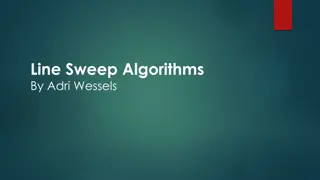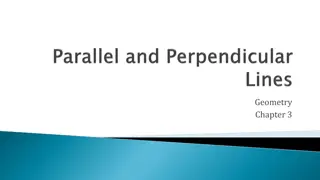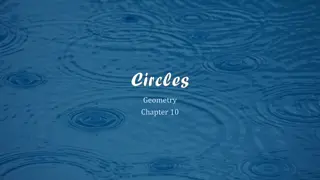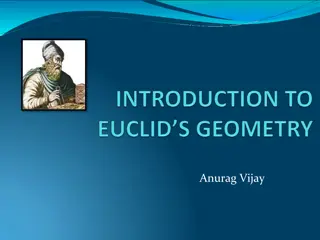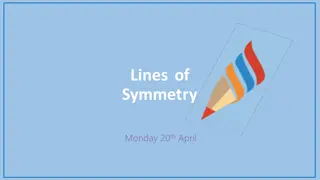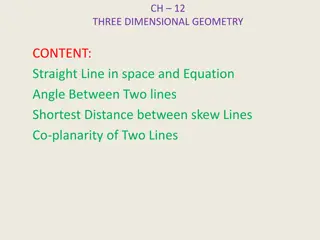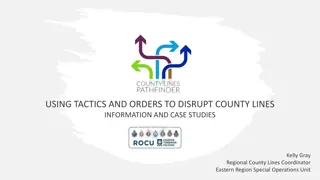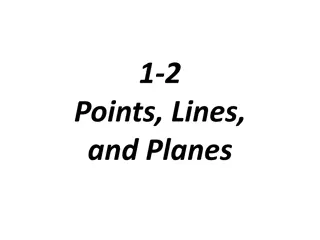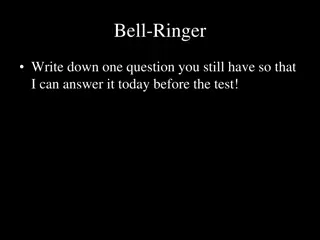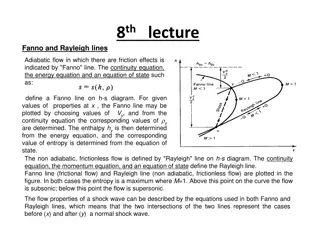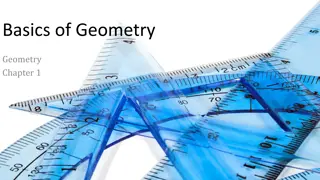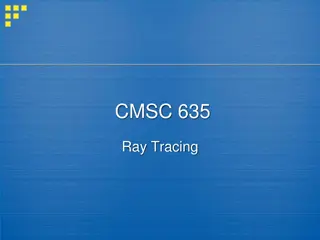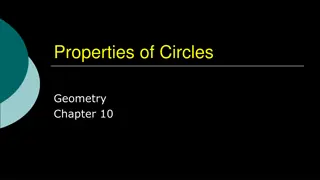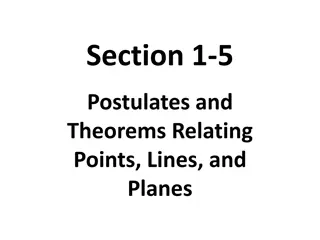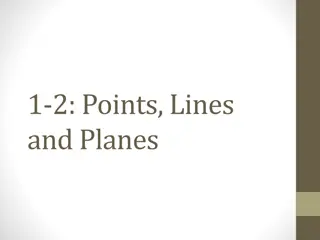Geometry Concepts: Lines, Intersections, and Types
In this activity, students work independently on identifying characteristics of different types of lines, intersections, and spatial relationships in geometry. The content includes fill-in-the-blank exercises, questions about coplanar lines, and examples of oblique, perpendicular, parallel, and skew lines. Students also learn to define and recognize these concepts using visual aids and explanations.
Download Presentation

Please find below an Image/Link to download the presentation.
The content on the website is provided AS IS for your information and personal use only. It may not be sold, licensed, or shared on other websites without obtaining consent from the author.If you encounter any issues during the download, it is possible that the publisher has removed the file from their server.
You are allowed to download the files provided on this website for personal or commercial use, subject to the condition that they are used lawfully. All files are the property of their respective owners.
The content on the website is provided AS IS for your information and personal use only. It may not be sold, licensed, or shared on other websites without obtaining consent from the author.
E N D
Presentation Transcript
DO NOW! Only things on desk: Pencil Handouts you picked up Work silently & independently
DO NOW!: Fill in the blank with always, sometimes, or never. 1. If two planes intersect, then they intersect at a line. always 2. If two lines intersect, then they intersect at two different points. never always 3. ?? is another name for ??. 4. Two lines intersect at one point. sometimes 5. One line can be drawn through three points. sometimes 6. In your own words, what does intersect mean? To meet, touch, go/cut through, cross, etc.
7. Will ??and ?? ever intersect in space? (Lines that intersect on the page do not necessarily intersect in space.) no 8. Will the following pairs of lines intersect in space? no a) ?? and ?? yes at point M b) ?? and ?? c) ?? and ?? Yes at point R d) ?? and ?? no
9. Are the following pairs of lines coplanar? This means: Can they lie in the same plane? a) ?? and ?? b) ?? and ?? c) ?? and ?? d) ?? and ??
We will be able to: - Name and describe the 4 different types of lines
Oblique Intersecting Perpendicular 2 Lines are described as Parallel Non- Intersecting Skew
With your group, use the provided examples & non-examples to complete the table. Type of Lines Characteristics Picture OBLIQUE SYMBOL: PERPENDICULAR SYMBOL: PARALLEL Think about which are coplanar and which are not SKEW
Intersecting Oblique Lines Intersect to form acute or obtuse angles
Look for the box in a picture! Perpendicular Lines Intersect to form a right angle Symbol: Example:j l l j Line j is perpendicular to line l
Look for the double arrow in a picture! Parallel Lines NEVER intersect Coplanar Symbol: Example: AB CD A m m C B Line AB is parallel to line CD n n D AB is parallel to CD
Skew Lines A m m NEVER intersect Non-Coplanar C B n n D mandn are skew aandb are skew
Example 1: Think of the sides in the figure as planes. a) List all lines parallel to ??. b) List all lines parallel to ?? containing point A. c) List all lines skew to ??. d) List all lines skew to ?? containing point A. e) List all lines perpendicular to ??. f) List all lines perpendicular to ?? containing point A. g) Extension: Name the plane that is parallel to Plane EFG.
Example 2: YOUR TURN! ??, ?? a) List all lines parallel to ??. ?? b) List all lines parallel to ?? containing point F. ??, ??, ??, ??, ?? c) List all lines skew to ??. d) List all lines skew to ?? containing point F. ?? ??, ??, ??, ??, e) List all lines perpendicular to ??. f) List all lines perpendicular to ?? containing point F. ?? g) Extension: Name the plane that is parallel to Plane BAH. Plane CDE
Example 3: Think of the sides of a figure as planes. a) List all lines parallel to ??. ?? and ?? b) List all lines skew to ??. ?? and ?? c) Describe ?? and ??. ????
What is the best description of the horizontal bars in the photo? A. INTERSECTING B. PERPENDICULAR C. SKEW ? D. PARALLEL
Is the platform perpendicular, parallel, or skew to the ground? ????????
Is the arm perpendicular, parallel, or skew to a telephone pole? ????





